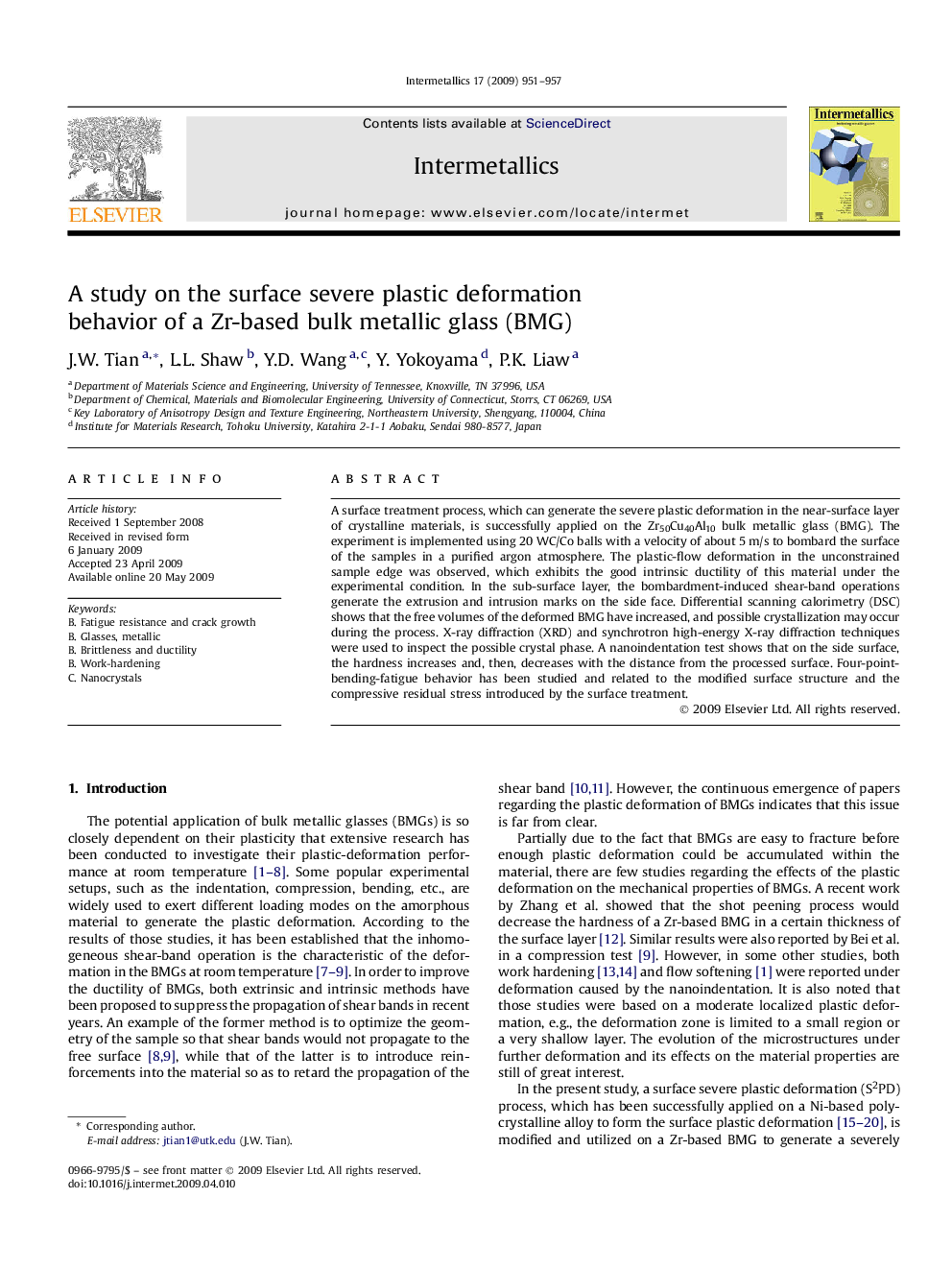| Article ID | Journal | Published Year | Pages | File Type |
|---|---|---|---|---|
| 1601561 | Intermetallics | 2009 | 7 Pages |
Abstract
A surface treatment process, which can generate the severe plastic deformation in the near-surface layer of crystalline materials, is successfully applied on the Zr50Cu40Al10 bulk metallic glass (BMG). The experiment is implemented using 20 WC/Co balls with a velocity of about 5Â m/s to bombard the surface of the samples in a purified argon atmosphere. The plastic-flow deformation in the unconstrained sample edge was observed, which exhibits the good intrinsic ductility of this material under the experimental condition. In the sub-surface layer, the bombardment-induced shear-band operations generate the extrusion and intrusion marks on the side face. Differential scanning calorimetry (DSC) shows that the free volumes of the deformed BMG have increased, and possible crystallization may occur during the process. X-ray diffraction (XRD) and synchrotron high-energy X-ray diffraction techniques were used to inspect the possible crystal phase. A nanoindentation test shows that on the side surface, the hardness increases and, then, decreases with the distance from the processed surface. Four-point-bending-fatigue behavior has been studied and related to the modified surface structure and the compressive residual stress introduced by the surface treatment.
Keywords
Related Topics
Physical Sciences and Engineering
Materials Science
Metals and Alloys
Authors
J.W. Tian, L.L. Shaw, Y.D. Wang, Y. Yokoyama, P.K. Liaw,
